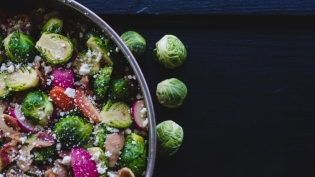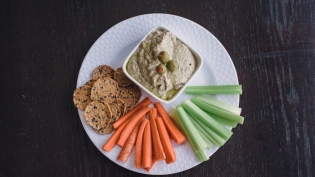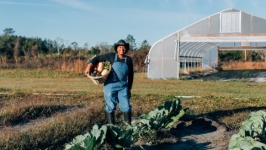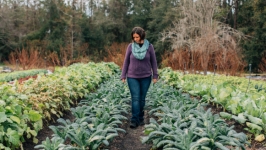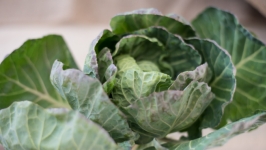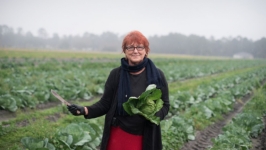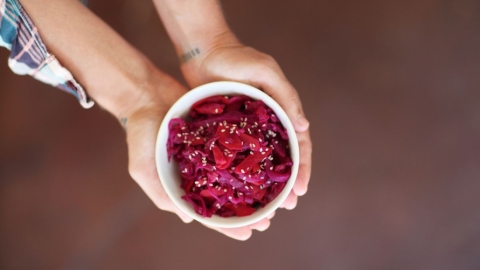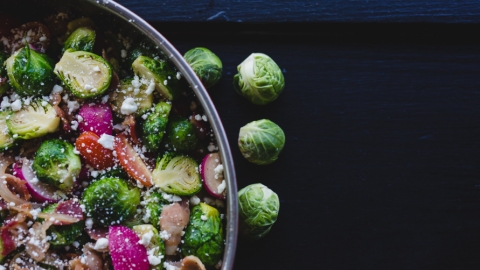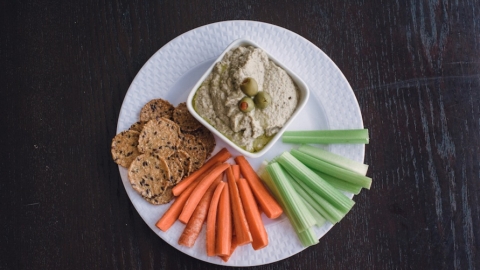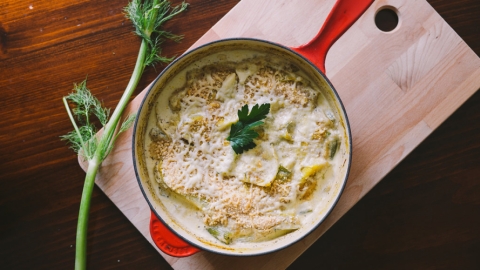50 Shades of Green
Let’s face it. We all have relationships with our food. We find security in certain edible items like we did in the teddy bear of our childhood, or the raggedy sweatshirt we’ve owned since junior year.If you are suffering from vegetable tunnel vision, seeing the same thing on your grocery list week after week, it’s time to think about shopping outside of your comfort zone.Northeast Florida farms are broadening the scope of their vegetable selection, and visibility of international and offbeat varieties has increased at local farmers’ markets, on restaurant tables and in the produce aisles of chain supermarkets.
Blue Sky Farms in Elkton is owned by Danny Johns, a fourth-generation potato farmer. A few short years ago Johns decided to start a trial garden to experiment with new varieties of produce and since then, the farm hasn’t looked back. While potatoes still reign king, other veggies have elbowed their way to a place at the table. Diversifying has worked well for Blue Sky. The farm’s Garden and Marketing Manager Megan DeJonge would have it no other way.
“I love to grow anything different or strange,” she said. Her infectious enthusiasm evident, DeJonge bounded through the rows of Japanese eggplant, red Russian kale, purple and green kohlrabi.
“I just get so pumped out here!” She slashed a watermelon radish in half. “Look at this!”
According to DeJonge, providing their CSA customers with new or unique items every week and experimenting with what grows best are just two reasons that Blue Sky Farms has increased production of international veggies.

Cabbage and potatoes used to be the territory gatekeepers, but times change and, whether driven by necessity or choice, county farms are branching out. The number of potato farmers in the region has steadily declined as potato production has moved west to mega farms.
Sykes and Cooper Farms in Elkton grew potatoes for generations, and then moved to sod in the late 1990’s (until the housing bust). They now grow a host of Asian vegetables, 85-90% of which are then shipped north and then rest is sold locally. Bucky Sykes rents about 250 acres of his family’s farm to a Chinese-owned company and plants it with these “short” (30-45 day) crops. The two or three crops per acre turn into between 600- 700 acres because of this turnover. Sykes is glad to be able to continue to farm on his own land. “It’s pretty good, I enjoy going to work now,” he said.
Bonnie Wells is the commercial agriculture agent at the UF/IFAS St. Johns County Extension and experiences firsthand how the region is shifting. For two years, her responsibilities have included helping new and established farms with management, pesticide education and commercial production issues. Wells said she’s definitely “seeing more farmers try new things” as potato industry contracts are tough and profit margins are slim.
To get you started on expanding your produce horizons, meet some of our area’s less familiar vegetable offerings with international roots.

WATERMELON RADISH
One evening last spring I arrived home to find my girlfriend fixing dinner. Vegetable carnage and food processor blades littered the counter- top. She presented a bowl full of pink puréed something or other for me to try.
“What is it?” I grabbed a carrot stick and dove in, having never met a dip or spread I didn’t like.
“Beet dip!” she boasted.
Only problem? We didn’t have any beets.
I rechecked the “what’s in your bag” email from our CSA and realized it was a watermelon radish she used (thinking it was some kind of wacky beet). The dip was outstanding, nonetheless, and it taught us that you can annihilate whatever you want in the Cuisinart with cannellini beans, a handful of walnuts, a splash of olive oil plus maple syrup and it will most likely be grand.
Cut open this Chinese heirloom variety of a daikon radish, and the dull green to white outer layer reveals a gorgeous variegated fuchsia and magenta flesh. Watermelon radishes make a beautiful presentation pickled, or just sliced for salad or a crudité platter. They’re fabulous roasted or braised as well, but lose a little of their attractive color when you cook them.

DAIKON RADISH
Never seen a daikon radish? Close your eyes. Picture a large carrot. Maybe one that locked itself in the library of a damp gothic castle, eating Ben & Jerry’s and reading Stephen King novels until it finally emerged blinking into the sunlight, pasty white and fattened. Popular throughout Asia, daikon radishes are mild tasting and full of vitamin C. These super versatile elongated root veggies lend themselves well to stir-fries and salads and can be pickled, roasted, souped or kimchied.

BLACK SPANISH RADISH
The rough dark skin evokes baby rhinoceros hide, yet the outside belies a gorgeous pure- white interior. Typically pungent when raw like their many radish relatives, they’re awesome roasted and make fun-looking chips when you leave the peel on. While a naturally black-occurring vegetable may give you pause, give them a chance. Blue Sky is now offering 15 varieties of radishes to local merchants.
"We were all surprised at how they took off," DeJonge said.
According to KYV Farm’s Francisco Arroyo, while some of his CSA and market customers actually ask for these idiosyncratic veggies, he looks for diversity as well. He said, “niche farming is risky and can be rewarding both economically and professionally.” Arroyo finds that most of his customers “are willing to try new things.”

KOHLRABI
You’ve seen it at the farmers’ market. From the smooth round bulb spring numerous long, slim arms that culminate in leafy jazz hands. It’s so very happy you picked it from the table. Stick a pair of googly eyes on it, and kohlrabi becomes a creature from outer space, or a muppet gone awry. If Steve Buscemi were a vegetable, he’d be kohlrabi.
The root and leaves are edible and it’s widely consumed in German-speaking countries (the name comes from a combo of the German words for cabbage and turnip). My personal favorite way to eat kohlrabi is in a Waldorf-style salad (think mayo, apples, pecans, raisins), enjoying its broccoli-stem-esque flavor.

BOK CHOY & NAPA CABBAGE
Each of these cruciferous champs is common in East Asian cuisine. The name bok choy reminds me of the old “toy boat” tongue twister (say it five times fast). If you’re nervous about trying something new, consider bok choy a gateway international veggie that you probably had. There are infinite ways to love its crunch. When a huge, oblong head of Napa cabbage recently made its way into my life, the beautiful giant green veined leaves had me yearning to curl up on its crinkled sheets and fall asleep like an Anne Geddes baby.
Chop a bunch of Napa and toss it with shredded carrots, green onions, grated ginger, toasted sesame oil and rice wine vinegar for a yummy slaw option. Throw it in the wok near the end of cooking any stir-fry.
JAPANESE EGGPLANT
Japanese (or Oriental) eggplants aren’t actually the premature offspring of larger, pear-shaped eggplants, but rather their thin-skinned, delicate cousins. But don’t poke fun at the scrawny little guys! They have the same nutritional value as their fatter counterparts, yet fewer seeds mean they are less bitter and peeling is optional.
Get crazy-international and make a batch of baba ganoush with the slender aubergines, and you will not be sorry. One more world- rocking eggplant fact (and in case Alex Trebek ever asks): This vegetable is actually a fruit. (It’s true.)
I appreciate that trying something new is tough, much like when your tween niece tells you to download a song she loves and wants to share: You’re skeptical at first, but give it a few listens and then you find yourself randomly humming it in the shower.
The New Year is a perfect time to be adventurous. Visit your favorite local restaurant and order the special, or hit up one of our amazing markets for items grown in our backyard. Freshen it up, think outside the (ice) box and try a new vegetable, especially one with international roots. Know that when all else fails, olive oil, salt, pepper and 20 minutes in a 350° oven could make even a few chunks of rubber tire palatable.




